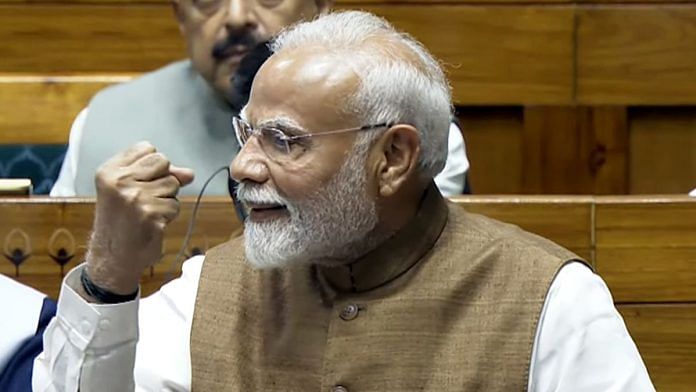Observe a familiar pattern. The nation unites after a horrific terror attack. The Opposition takes the national interest seriously, so it offers full support to the government for a strong response. But be it Balakot or Sindoor, immediately after an opaque military action, the BJP switches to election mode, evading all accountability and painting all those who ask questions as unpatriotic.
Political consensus over Operation Sindoor turned into a heated exchange in Parliament because Narendra Modi has turned India’s foreign policy into a personal image-building exercise. The ‘vishwaguru’ media blitz worked for a while. India’s G-20 leadership and photo-ops with world leaders were used to claim Modi’s grandeur and portray that it is India’s great fortune to have him as PM.
But as recent events have revealed, this is Modi’s ‘phata poster, nikla zero’ moment. Donald Trump has claimed to have engineered the ceasefire between India and Pakistan, 30 times and counting. And our prime minister has failed to directly call him out or even say his name, preferring to ramble on about the choices Jawaharlal Nehru might have made over six decades ago.
The costs of this narcissism are clear to see. Obsession with the PM’s image has led to the Modi government remaining mum on widespread reports of Indian aircraft losses, and even attempting to pin the blame on the Indian Air Force. Chief of Defence Staff General Anil Chauhan admitted, on 31 May, that India lost aircraft in Operation Sindoor but ascribed these to a “tactical mistake”. Ten days later, India’s Defence Attache to Indonesia, Captain Shiv Kumar, attributed the aircraft losses squarely to “the constraint given by the political leadership to not attack the military establishment or their air defences”. In other words, not only were Indian pilots sent into battle exposed to enemy air-to-air and surface-to-air missiles, they were also prevented from firing back because of political constraints.
The diplomatic failure is equally glaring. For all the ‘energetic’ engagement and multi-party delegations going around the world, there was surprisingly weak international endorsement of India’s military actions. Most countries called for “mutual de-escalation”, in effect hyphenating India and Pakistan.
Also read: Geopolitical forces beyond New Delhi’s control are at play in Trump’s approach to India
Trump’s agenda
The icing on the cake was when the country whose civilians were murdered in cold blood had to watch the presumed sponsor of the terror attack, “Field Marshal” Asim Munir, having lunch with President Trump in the White House. In Trump’s words, the agenda of the lunch was to “thank him for not going into the war [with India]” and “ending the war” and that he “was honoured to meet him today.” Compare this with what Barack Obama said in his 2010 address to India’s parliament: “We will continue to insist to Pakistan’s leaders that terrorist safe-havens within their borders are unacceptable, and that the terrorists behind the Mumbai attacks be brought to justice.” Howdy Modi?
And now the US has announced a 25 per cent tariff on Indian exports from 1 August, while its talks with Pakistan continue. A trade deal may still emerge in the coming days, but Trump’s hard negotiating stance is clearly targeting India. Not to forget how the US announced sanctions on six Indian firms for trading Iranian petrochemicals yesterday, the same time as Trump announced a deal for a US firm to develop Pakistani oil reserves. It just isn’t cricket.
This is a gigantic setback to Indian foreign policy under Modi, and cannot be pinned on Trump’s unpredictability alone. When you personalise foreign policy and prioritise image-building, you hand your partners and adversaries a tool with which to manipulate you. This ranges from superficial public gestures that play well on PR photos to sweetheart deals for favoured Modi cronies.
The Modi government first put all its eggs into the US basket when the unipolar moment was clearly over. It subsequently overcorrected, accommodating an aggressive China by ceding buffer zones in eastern Ladakh and agreeing to Chinese concurrence for Indian patrols that earlier had free access to various patrolling points.
Meanwhile, China gave full support to Pakistan during Operation Sindoor, giving it “live inputs” on Indian operations, and turning India into a testing ground for network-centric warfare and new weapons systems. It has restricted critical exports to India and made moves into the northeast through the world’s largest hydropower project on the Brahmaputra.
To put it bluntly, Nehru’s nonalignment sought investment and aid from both the US and the USSR. Modi’s nonalignment has accepted economic and political penalties from both the US and China.
Amitabh Dubey is a Congress member. He tweets @dubeyamitabh. Views are personal.
(Edited by Theres Sudeep)




